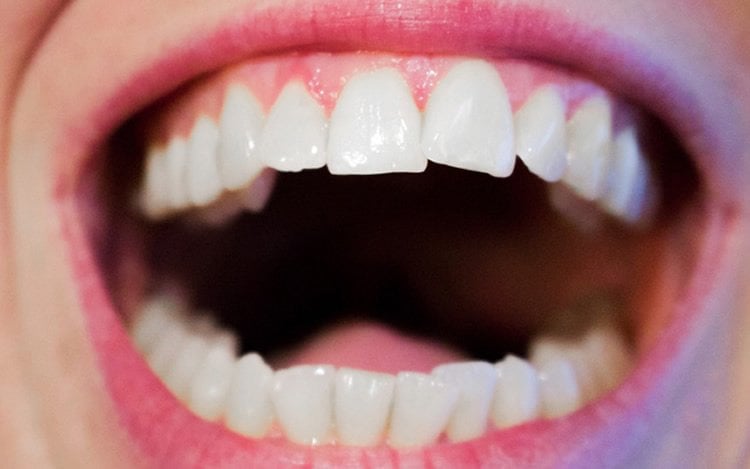Summary: Researchers discovered migraine sufferers harbor significantly more microbes with the ability to modify nitrates than those who do not suffer migraine headaches.
Source: UCSD.
Researchers at University of California San Diego School of Medicine have found that the mouths of migraine sufferers harbor significantly more microbes with the ability to modify nitrates than people who do not get migraine headaches. The study is published October 18 by mSystems.
“There is this idea out there that certain foods trigger migraines — chocolate, wine and especially foods containing nitrates,” said first author Antonio Gonzalez, a programmer analyst in the laboratory of Rob Knight, PhD, professor and director of the Center for Microbiome Innovation at UC San Diego and senior author on the study. “We thought that perhaps there are connections between what people are eating, their microbiomes and their experiences with migraines.”
Many of the 38 million Americans who suffer from migraines report an association between consuming nitrates and their severe headaches. Nitrates, found in foods such as processed meats and green leafy vegetables and in certain medicines, can be reduced to nitrites by bacteria found in the mouth. When circulating in the blood, these nitrites can then be converted to nitric oxide under certain conditions. Nitric oxide can aid cardiovascular health by improving blood flow and reducing blood pressure. However, roughly four in five cardiac patients who take nitrate-containing drugs for chest pain or congestive heart failure report severe headaches as a side effect.
Using publicly available data from the American Gut Project, a crowdfunded citizen science effort managed by the Knight lab, Gonzalez and colleague Embriette Hyde, PhD, sequenced bacteria found in 172 oral samples and 1,996 fecal samples from healthy participants. The participants had previously filled out surveys indicating whether they suffered from migraines.
The bacterial gene sequencing found that bacterial species were found in different abundances between people who get migraines (migraineurs) and non-migraineurs. In terms of bacterial community composition, the team did not find huge differences in either fecal or oral samples from migraineurs compared to non-migraineurs.
The team then used a bioinformatic tool called PICRUSt to analyze which genes were likely to be present in the two different sets of samples, given the bacterial species present. In fecal samples, they found a slight but statistically significant increase in the abundance of genes that encode nitrate, nitrite and nitric oxide-related enzymes in migraineurs. In oral samples, these genes were significantly more abundant in migraineurs.

“We know for a fact that nitrate-reducing bacteria are found in the oral cavity,” said Hyde, project manager for the American Gut Project and assistant project scientist in the Knight lab. “We definitely think this pathway is advantageous to cardiovascular health. We now also have a potential connection to migraines, though it remains to be seen whether these bacteria are a cause or result of migraines, or are indirectly linked in some other way.”
Gonzalez and Hyde said the next steps will be to look at more defined groups of patients, separated into the handful of different types of migraines. Researchers can then determine if their oral microbes really do express those nitrate-reducing genes, measure their levels of circulating nitric oxide and see how they correlate with migraine status.
Co-authors of this study include: Naseer Sangwan and Jack A. Gilbert, University of Chicago; and Erik Viirre, UC San Diego.
Funding: This research was crowdfunded through individual contributions from American Gut Project participants.
Source: Heather Buschman – UCSD
Image Source: NeuroscienceNews.com image is adapted from the UCSD press release.
Original Research: Full open access research for “Migraines Are Correlated with Higher Levels of Nitrate-, Nitrite-, and Nitric Oxide-Reducing Oral Microbes in the American Gut Project Cohort” by Antonio Gonzalez, Embriette Hyde, Naseer Sangwan, Jack A. Gilbert, Erik Viirre, and Rob Knight in mSystems. Published online October 18 2016 doi:10.1128/mSystems.00105-16
[cbtabs][cbtab title=”MLA”]UCSD. “Migraine Sufferers Have More Nitrate-Reducing Microbes in their Mouths.” NeuroscienceNews. NeuroscienceNews, 19 October 2016.
<https://neurosciencenews.com/nitrate-microbes-migraine-5310/>.[/cbtab][cbtab title=”APA”]UCSD. (2016, October 19). Migraine Sufferers Have More Nitrate-Reducing Microbes in their Mouths. NeuroscienceNews. Retrieved October 19, 2016 from https://neurosciencenews.com/nitrate-microbes-migraine-5310/[/cbtab][cbtab title=”Chicago”]UCSD. “Migraine Sufferers Have More Nitrate-Reducing Microbes in their Mouths.” https://neurosciencenews.com/nitrate-microbes-migraine-5310/ (accessed October 19, 2016).[/cbtab][/cbtabs]
Abstract
Migraines Are Correlated with Higher Levels of Nitrate-, Nitrite-, and Nitric Oxide-Reducing Oral Microbes in the American Gut Project Cohort
Nitrates, such as cardiac therapeutics and food additives, are common headache triggers, with nitric oxide playing an important role. Facultative anaerobic bacteria in the oral cavity may contribute migraine-triggering levels of nitric oxide through the salivary nitrate-nitrite-nitric oxide pathway. Using high-throughput sequencing technologies, we detected observable and significantly higher abundances of nitrate, nitrite, and nitric oxide reductase genes in migraineurs versus nonmigraineurs in samples collected from the oral cavity and a slight but significant difference in fecal samples.
“Migraines Are Correlated with Higher Levels of Nitrate-, Nitrite-, and Nitric Oxide-Reducing Oral Microbes in the American Gut Project Cohort” by Antonio Gonzalez, Embriette Hyde, Naseer Sangwan, Jack A. Gilbert, Erik Viirre, and Rob Knight in mSystems. Published online October 18 2016 doi:10.1128/mSystems.00105-16







